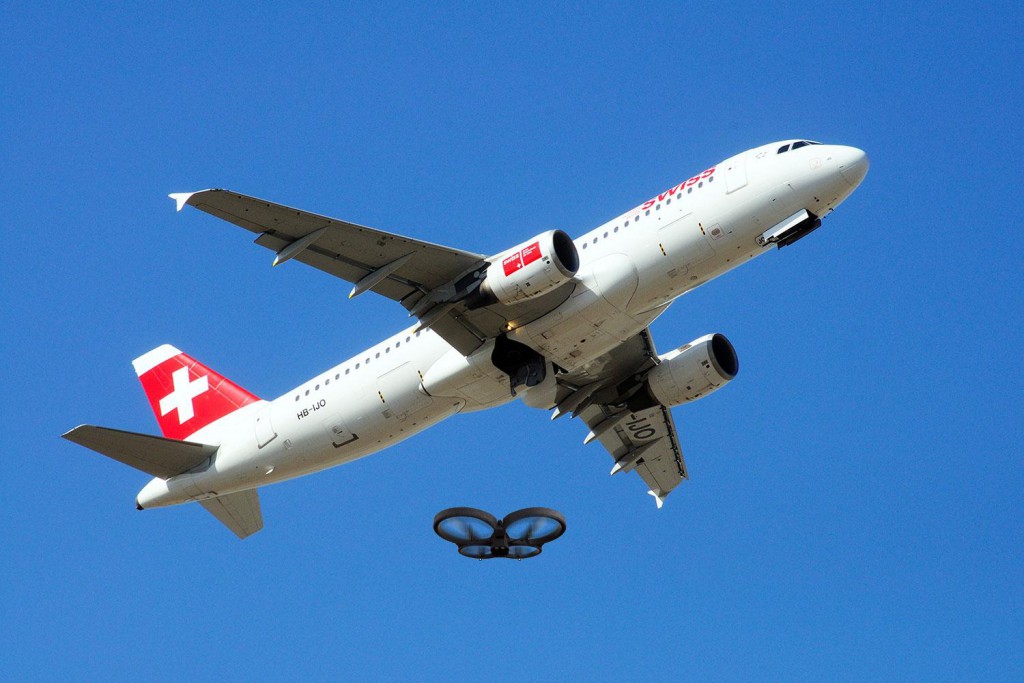 Drone security firm Dedrone and network giant Verizon’s OCR (Operation Convergent Response) team have written the book – well, the whitepaper, anyway – on preventing drone disasters during emergency response.
Drone security firm Dedrone and network giant Verizon’s OCR (Operation Convergent Response) team have written the book – well, the whitepaper, anyway – on preventing drone disasters during emergency response.
Dedrone is one of the leading firms in the anti-drone technology space, providing an airspace security platform that detects, classifies, and mitigates drone threats. Dedrone calls this a “proactive drone detection solution” because it identifies a potential problem before an accident occurs. Their DroneTracker software solution aggregates sensor data, displaying potential threats in real-time through a web- based interface. It’s a solution that the company says can be used to protect airports, corporate espionage targets, or government assets – but in this whitepaper researchers focus on a mission-critical application: making sure emergency responders can get off the ground.
Disasters create a cascading problem for responders. In addition to attracting rogue drones – even if some are well-meaning – disasters hit communications networks, making counter-drone measures difficult to implement. As the whitepaper explains:
- Significant resources are invested to protect communications infrastructure, but have limitations against powerful physical stress.
- Drones are being used for disaster response in unprecedented numbers.
- Hobby drone pilots are ignoring the calls from federal regulators to stay out of restricted airspace, causing delays in recovery efforts.
- Rogue drones are adding pressure to enterprises and organizations for protection of their physical and cyber infrastructure against drone threats while exposed to extreme security vulnerabilities.
The result, say researchers, is a need for proactive drone detection to be implemented as part of an emergency response team: and to work in critical situations, software solutions must partner with reliable connectivity providers.
“The rise of commercial and hobby drones in U.S. airspace poses new questions and concerns with how emergency managers maintain safe skies for first responders. Reliable connectivity is essential for communications between disaster responders to understand airspace activity, as well as to individuals and enterprises who are maintaining the security of high risk and high value infrastructure against drone threats,” says the authors. “Hobby pilots may not understand the risks they pose when they fly in dangerous conditions and may be flying without FAA authorization, prompting law enforcement and federal agencies to rely on proactive drone detection during disasters.”
“Air traffic and connectivity systems for small drones at low altitudes is necessary for keeping skies clear for disaster recovery efforts, to identify rogue or nuisance pilots, and to continue to protect sensitive infrastructure from airspace threats. Verizon and Dedrone provide solutions for these issues and together, can help protect airspace from drone threats during a community’s most dangerous experiences.”

Miriam McNabb is the Editor-in-Chief of DRONELIFE and CEO of JobForDrones, a professional drone services marketplace, and a fascinated observer of the emerging drone industry and the regulatory environment for drones. Miriam has penned over 3,000 articles focused on the commercial drone space and is an international speaker and recognized figure in the industry. Miriam has a degree from the University of Chicago and over 20 years of experience in high tech sales and marketing for new technologies.
For drone industry consulting or writing, Email Miriam.
TWITTER:@spaldingbarker
Subscribe to DroneLife here.







[…] Verizon and Dedrone Write the Book on Preventing Drone Disasters During Emergency Response. […]